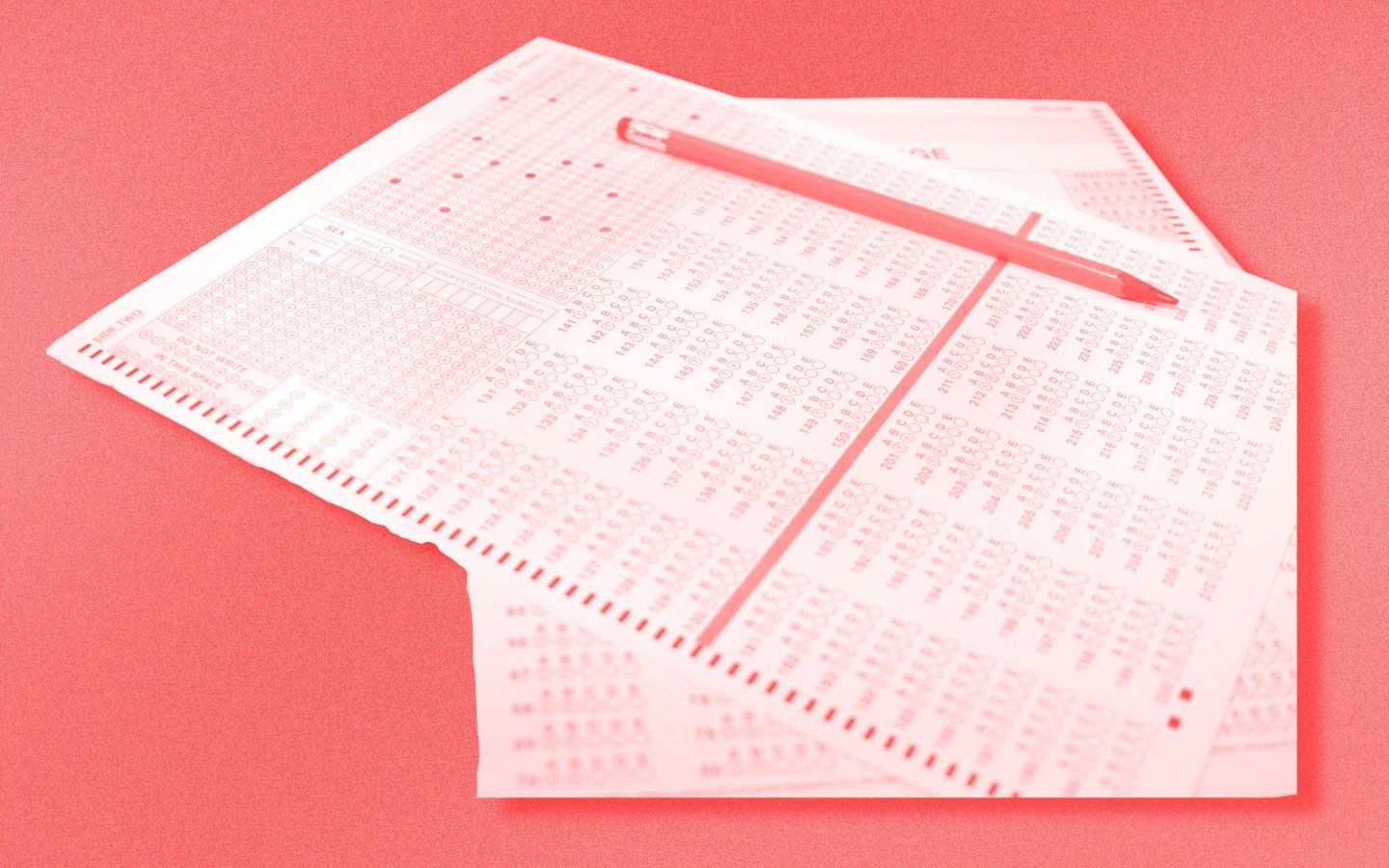Dougal: What’s the Cost of a Bad Test? Much More than $7 Per Student
When states are required to test every child annually from third grade on up, economics overrides good education practice

Get stories like this delivered straight to your inbox. Sign up for The 74 Newsletter
The last months of the school year mean testing season, so before summer break, students all over the country are sitting down for hours of exams that are supposed to measure whether they have met their states’ standards for learning.
Up to a quarter of the school year is spent on test taking and prep, driven by a multibillion-dollar industry that impacts how kids are taught, what they learn and how teachers operate in their classrooms. The ripple effects are much bigger than simply “teaching to the test.”
The ritual of pausing classroom instruction for weeks to assess how much students had memorized over the previous few months was itself paused in 2020 when the pandemic shuttered school buildings. The following year, there was debate among educators, researchers and government officials over whether testing should resume. The bureaucrats won out.
Now, the debate should not be whether schools should assess the learning progress of students. They have to. Collecting testing data has helped to shine a light on the wide achievement gap in this country. Rather, the discussion should focus on whether children are being made to sit through the right kind of tests.
When states are required to test every child annually from third grade on up, economics overrides good education practice. The only type of test that is currently cost-effective in this regime is one composed of mostly computer-graded multiple choice questions. States spend as little as $7 per student per test, with a national average of about $25. Such exams inevitably assess students’ retention of facts rather than their competency.
Competency-based tests that focus on whether students have truly mastered concepts by requiring them to, for example, write effectively, think critically and analyze information sources do exist. They’re more expensive, costing $75 to 100 per exam. But this is because they assess skills that must be evaluated by humans, not computers. In short, they test what is important for students to know and be able to do beyond school.
What exactly is the cost of saving roughly $50 per student on a test? It’s a child who isn’t taught to think critically about a problem. It’s teachers constricted by a rigid curriculum designed around students scoring as “proficient.” It’s principals unwilling to innovate due to fear that their school will be labeled as failing. And it’s millions of students graduating every summer without the skills needed to make it in the global economy.
All this adds up to lifeless schools, where students’ natural curiosity is strangled, teachers’ passion to educate is drained and everyone wants to get out of there as quickly as possible.
If the U.S. Department of Education relaxed requirements around testing, and states took advantage of that flexibility, there could be a better testing strategy — one that focuses on the relevant knowledge and skills that children need to succeed.
Breaking the stranglehold of cheap standardized testing means assessing students less frequently, but with better exams. Testing a sample of students reflecting a state’s overall demographics in each subject could save money and reduce the burden so much testing takes on time for actual instruction.
A student may take a math test in third grade, science in fifth grade and social studies in eighth grade, rather than every subject each year. This is how the National Assessment of Educational Progress, known as the Nation’s Report Card, and the international PISA test are done, and both give researchers and governments enough data to track trends. Or, every student could be tested in every subject in particular gateway grades, such as fifth and eighth, but not every student every year for years on end.
Tracking the progress of the students who aren’t tested every year would mean relying on teachers and building their capacity to assess their students’ progress over the course of the school year.
Teachers know their students best. They are the ones who know if a third grader is struggling to master a lesson in the moment, not six months later, when annual test scores are released. By the time teachers receive the scores from exams taken in the spring, they have a whole new set of kids. It is no wonder teachers put little value on these tests.
The highest-performing countries allow teachers the flexibility to conduct shorter, less intrusive and more targeted assessments. These educators are continuously engaged in assessing their students’ understanding. None of the top performers test in exactly the same way, but all do better testing — and less of it. The United States needs to break out of the restrictive cycle of testing every child each spring, put more faith in teachers to track student progress and give them the time and flexibility they need to get every kid ready for life beyond school.
Get stories like these delivered straight to your inbox. Sign up for The 74 Newsletter

;)
